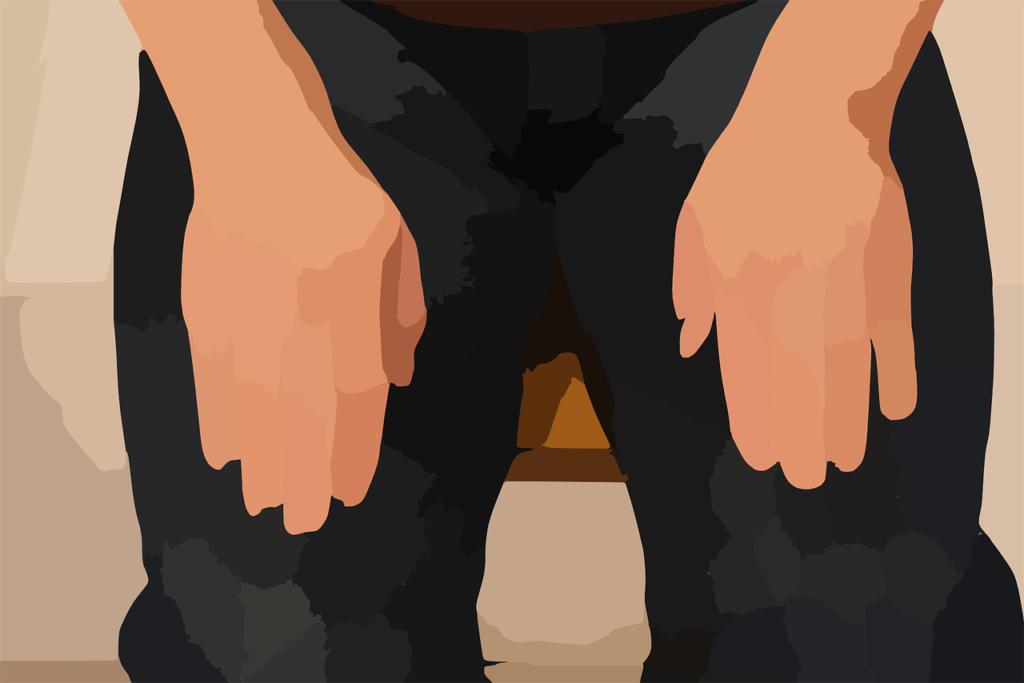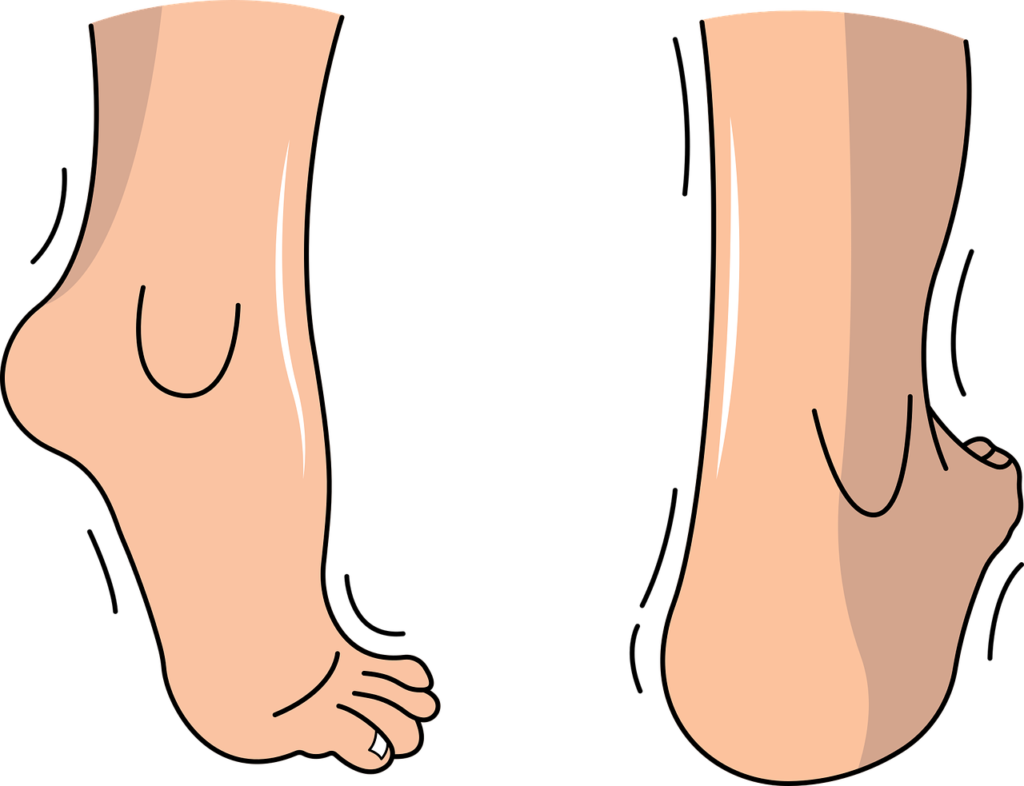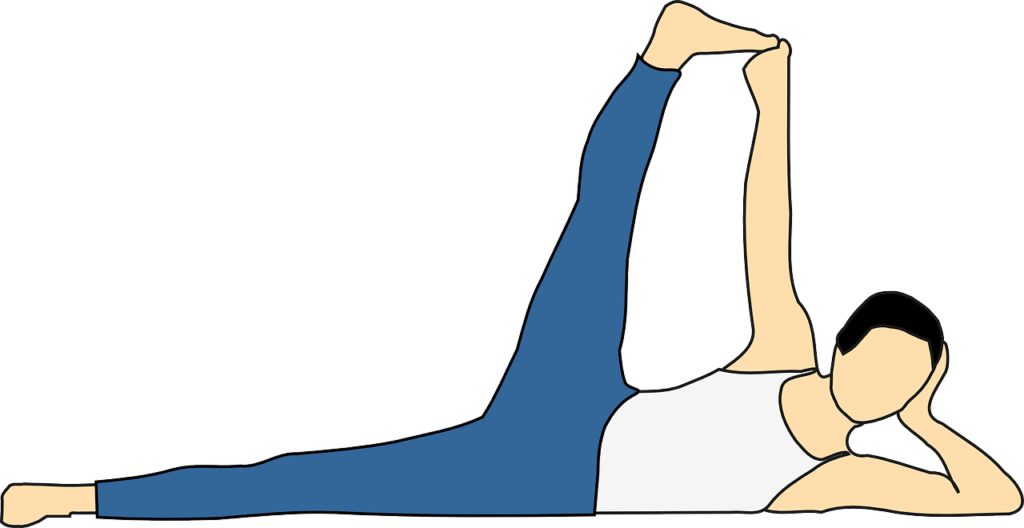
Intro
Living with fibromyalgia can be a challenging journey, filled with unpredictable pain and discomfort. However, incorporating regular stretches into your daily routine can make a significant difference. **_Stretches for fibromyalgia_** offer a non-invasive and effective way to manage symptoms, improve flexibility, and enhance your overall quality of life. In this blog post, we’ll explore a series of gentle stretches designed specifically for fibromyalgia sufferers, aiming to ease tension, reduce pain, and promote relaxation.
Understanding Fibromyalgia and Its Impact on Muscles

Fibromyalgia is a chronic condition that brings widespread pain, fatigue, and tenderness in muscles, ligaments, and tendons.
It affects millions globally and can significantly hinder daily activities and overall well-being.
Flexibility training has been shown to decrease fibromyalgia symptoms such as pain, muscle stiffness, fatigue, and psychological factors like anxiety and depression.
Additionally, research suggests that flexibility training may contribute to decreasing physical difficulties, thus improving health-related quality of life (HRQoL) in individuals with fibromyalgia.
Living with fibromyalgia means experiencing muscle pain and tenderness that can fluctuate in intensity and location.
These symptoms make it essential to find effective, gentle ways to manage discomfort.
Stretching, specifically designed for those with fibromyalgia, can help mitigate these issues by loosening tight muscles, improving blood circulation, and promoting relaxation.
Understanding the impact of fibromyalgia on your muscles allows you to take informed steps to alleviate pain.
Each stretch aims to ease muscle tension and prevent stiffness from escalating.
This focus on flexibility can offer relief and serve as a proactive approach to managing the physical challenges posed by fibromyalgia.
Engaging in a routine that includes these targeted stretches could lead to significant improvements in your daily comfort and mobility, making it easier to navigate through the complexities of fibromyalgia.
Benefits of Stretching for Fibromyalgia Relief

Stretching offers numerous benefits for those dealing with fibromyalgia.
It helps to increase flexibility, improve range of motion, and reduce stiffness in muscles and joints.
Stretching also contributes to overall well-being, serving as a valuable tool for symptom management.
Interestingly, flexibility exercises have demonstrated more significant improvements in stiffness compared to aerobic exercises, making them particularly effective for fibromyalgia sufferers.
In addition to physical benefits, stretching provides mental and emotional relief.
The gentle, controlled movements can foster a sense of mindfulness and relaxation, which is crucial for managing the stress and anxiety that often accompany fibromyalgia.
Incorporating breathing techniques during stretching can further enhance these benefits, making each session a holistic experience that nurtures both body and mind.
Engaging in regular stretching sessions can create a positive feedback loop, where physical relief leads to emotional well-being, which in turn encourages continued practice and consistency.
Precautions to Take Before Starting a Stretching Routine

Before diving into a new stretching routine, it’s vital to approach it with care, especially when living with fibromyalgia.
The first step is to consult with your healthcare provider to ensure that the stretches you plan to do are safe and suitable for your specific condition.
They can offer personalized guidance based on your health needs.
Begin each session with a gentle warm-up to prepare your muscles.
This can be as simple as walking in place or performing light arm circles.
Warming up helps increase blood flow to your muscles, making them more pliable and less prone to injury.
Pay close attention to how your body feels during each stretch.
It’s important to listen to your body’s signals and not push yourself beyond your comfort zone.
Stretching should never cause pain.
If you experience pain, stop immediately and adjust the stretch.
Your goal is to alleviate tension and promote relaxation, not to exacerbate your symptoms.
Incorporate slow, controlled movements to avoid any sudden or jerky actions that could lead to muscle strain.
Hold each stretch for a gentle, sustained period—typically around 15-30 seconds.
This duration allows your muscles to gradually lengthen and relax without causing stress.
Consider keeping a journal to track your stretching routine and note any changes in your symptoms.
This can help you identify which stretches are most beneficial for you and adjust your routine accordingly.
Lastly, stay hydrated. Drinking water helps maintain muscle function and elasticity, making your stretching efforts more effective.
By taking these precautions, you can create a safe and supportive environment for your stretching routine, fostering both physical relief and emotional well-being.
Gentle Neck and Shoulder Stretches to Ease Tension

The neck and shoulders often bear the brunt of fibromyalgia-related tension and discomfort.
To help alleviate this, we can incorporate some gentle stretches into our daily routine.
Start with a neck tilt: sit or stand comfortably and slowly tilt your head towards one shoulder, aiming to bring your ear close to your shoulder.
Hold this position for about 15-20 seconds, then slowly return to the starting position and repeat on the other side.
This stretch helps to release tension along the sides of the neck.
Next, try a gentle neck rotation: gently turn your head to one side as if you are looking over your shoulder, hold for a few seconds, and then return to the center.
Repeat on the other side. This movement helps to increase flexibility and ease stiffness in the neck muscles.
For the shoulders, shoulder shrugs can be incredibly effective.
Raise your shoulders towards your ears in a slow, controlled motion, hold briefly, and then release them down.
Repeat this movement several times to help loosen tight shoulder muscles.
Another useful stretch is the cross-body shoulder stretch: bring one arm across your chest and use the opposite hand to gently pull it closer to your body.
Hold for about 15-30 seconds, then switch arms. This stretch targets the shoulder muscles and can help reduce stiffness.
Lastly, try the seated or standing arm circles: extend your arms out to the sides and make small circles with your hands, gradually increasing the size of the circles.
This movement promotes blood flow and helps to ease tension in the shoulder area.
These stretches, performed regularly and mindfully, can provide much-needed relief and improve mobility in the neck and shoulders.
Remember to breathe deeply and move gently, honoring your body’s limits.
Lower Back Stretches to Alleviate Pain

Lower back pain is a common complaint among fibromyalgia sufferers, but gentle stretching can offer relief.
One effective stretch to target this area is the knee-to-chest stretch.
Begin by lying on your back with your knees bent and feet flat on the floor.
Slowly bring one knee up towards your chest, holding it with both hands for about 15-30 seconds.
Make sure to keep your lower back pressed into the floor.
Then, gently lower your leg and repeat the process with the other knee.
This stretch helps relieve tension in the lower back and can improve flexibility.
Another helpful stretch is the seated forward bend.
Sit on the floor with your legs extended straight in front of you.
Slowly lean forward from your hips, reaching towards your toes.
You don’t have to touch your toes; just go as far as is comfortable while feeling a gentle stretch along your spine and hamstrings.
Hold this position for about 15-30 seconds, breathing deeply to enhance relaxation.
The cat-cow stretch is also excellent for alleviating lower back pain.
Start on your hands and knees in a tabletop position.
As you inhale, arch your back and lift your head and tailbone towards the ceiling, creating a gentle curve in your spine (the cow position).
As you exhale, round your back and tuck your chin towards your chest, pulling your belly button towards your spine (the cat position).
Repeat this sequence several times, moving fluidly with your breath.
This dynamic stretch helps to increase flexibility and reduce stiffness in the lower back.
Hip and Thigh Stretches to Increase Flexibility

Tension in the hips and thighs can often contribute to the discomfort experienced by those living with fibromyalgia.
Thankfully, incorporating targeted stretches can help alleviate this tension and improve flexibility.
Let’s explore a few gentle stretches that can be beneficial.
Start with the seated butterfly stretch.
Sit on the floor with the soles of your feet together and your knees bent out to the sides.
Gently press your knees towards the floor using your elbows, feeling a stretch in your inner thighs and hips.
Hold this position for about 15-30 seconds, breathing deeply and allowing your muscles to relax.
Another effective stretch is the standing quad stretch.
Stand tall and find your balance on one leg. Bend the opposite knee and bring your heel towards your glutes,
holding your ankle with your hand.
Keep your knees close together and your standing leg slightly bent to maintain stability.
Feel the stretch along the front of your thigh and hip. Hold this stretch for 15-30 seconds before switching to the other leg.
For a deeper hip stretch, try the pigeon pose.
Begin on all fours and bring your right knee forward towards your right wrist, placing your shin on the floor.
Extend your left leg straight back, keeping your hips square to the ground.
Slowly lower your upper body over your right leg, feeling the stretch in your right hip. Hold this pose for 15-30 seconds, then switch sides.
Incorporating these stretches into your daily routine can help reduce stiffness and improve mobility in your hips and thighs.
Always remember to listen to your body and move gently, ensuring each stretch feels comfortable and beneficial.
Simple Arm and Wrist Stretches for Daily Comfort

Simple Arm and Wrist Stretches for Daily Comfort
Arm and wrist stretches are invaluable for maintaining daily comfort, particularly when dealing with fibromyalgia.
These gentle exercises can help alleviate tightness and improve flexibility in the upper body.
Begin with a wrist flexor stretch.
Extend one arm in front of you, palm facing up.
Using your other hand, gently pull back on your fingers, feeling the stretch along the underside of your forearm.
Hold for 15-30 seconds, then switch sides. This stretch is great for releasing tension built up from repetitive activities.
Next, try an overhead tricep stretch.
Raise one arm overhead, then bend it at the elbow so your hand reaches down your back.
Use your other hand to gently push the elbow towards your head, feeling a stretch along your tricep.
Hold for 15-30 seconds and repeat with the other arm.
This stretch helps in loosening the tricep muscles and improving shoulder flexibility.
For a simple wrist extensor stretch, extend your arm out, palm facing down.
With your other hand, gently pull back on your fingers, stretching the top of your forearm.
Hold for 15-30 seconds and then switch to the other arm.
This can help alleviate stiffness in the wrists, often caused by daily activities like typing.
Finally, perform shoulder rolls.
Stand or sit comfortably, and gently roll your shoulders in a circular motion, first forwards and then backwards.
This can help in releasing any built-up tension and improve blood circulation in the shoulder area.
By incorporating these stretches into your daily routine, you can help manage fibromyalgia symptoms and maintain upper body comfort.
Calf and Ankle Stretches to Support Leg Health

Supporting leg health is crucial for maintaining mobility and balance, especially for those dealing with fibromyalgia.
To help keep your calves and ankles strong and flexible, try incorporating these gentle stretches into your routine.
Start with the standing calf stretch.
Face a wall and place one foot forward, keeping the other leg straight behind you with your heel on the ground.
Lean into the wall gently until you feel a stretch in your back calf.
Hold this position for about 15-30 seconds, then switch legs.
This stretch helps alleviate tension in your calf muscles.
For your ankles, try doing ankle circles.
Sit or stand comfortably and lift one foot slightly off the ground.
Rotate your ankle in a circular motion, first clockwise and then counterclockwise.
Do this for about 10-15 seconds in each direction before switching to the other ankle.
This exercise helps improve ankle flexibility and can reduce stiffness.
Another effective stretch is the seated ankle flex.
Sit on a chair and extend one leg out in front of you.
Flex your foot, pointing your toes towards your body, and then point them away.
Repeat this movement for about 10-15 seconds per foot.
This stretch targets both your calves and ankles, promoting better mobility.
Incorporating Breathing Techniques to Enhance Stretching

Breathing deeply and mindfully can significantly enhance the effectiveness of your stretching routine.
Engaging in diaphragmatic breathing, where you breathe deeply into your belly rather than your chest, helps to oxygenate your muscles, making them more pliable and responsive.
As you prepare for each stretch, take a deep inhale through your nose, allowing your abdomen to rise.
Exhale slowly through your mouth as you move into the stretch, letting go of any tension.
This synchronized breathing helps you stay present and connected to your body, fostering a sense of calm and relaxation.
Additionally, deep breathing can reduce stress hormones in the body, which is particularly beneficial for those managing fibromyalgia symptoms.
Consider incorporating a simple breathing exercise before your stretching session: sit or lie comfortably, place one hand on your abdomen, and take slow, deep breaths for a few minutes.
This practice not only prepares your body for stretching but also helps you develop a mindful approach to your routine.
By integrating these breathing techniques, you create a more holistic and effective stretching practice that nurtures both your physical and emotional well-being.
Creating a Sustainable Daily Stretching Routine

Creating a sustainable daily stretching routine can be transformative for those managing fibromyalgia.
Begin by setting aside a specific time each day dedicated to your stretching exercises.
Whether you choose to start your morning with gentle stretches to wake up your body or wind down in the evening to release the day’s tension, consistency is key.
Focus on a balanced routine that targets various muscle groups.
This could include neck and shoulder stretches, lower back stretches, and exercises for your hips, thighs, arms, wrists, calves, and ankles.
As your flexibility improves, you can gradually increase the intensity of your stretches, always listening to your body and staying within your comfort zone.
To support your stretching efforts, consider complementing them with other self-care practices.
Incorporate a holistic approach that includes a balanced **_fibromyalgia diet plan_**, sufficient rest, and effective stress management techniques.
This comprehensive strategy will help you manage your symptoms more effectively and enhance your overall well-being.
Remember, the goal is not just physical flexibility but also emotional resilience.
By creating a routine that you enjoy and can maintain, you’ll be taking proactive steps towards a healthier, more comfortable life with fibromyalgia.
Every small effort contributes to your journey toward better health and well-being.
